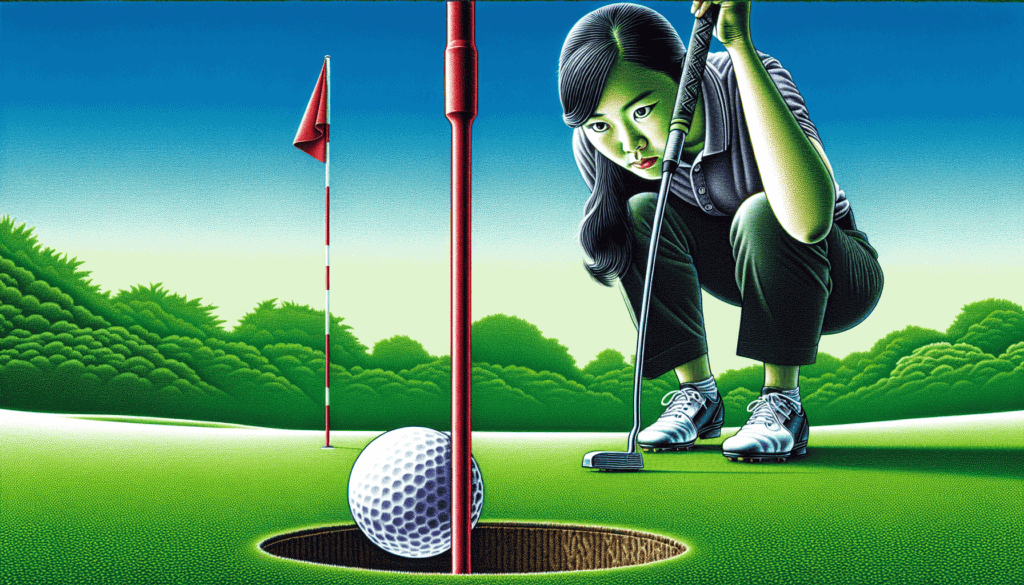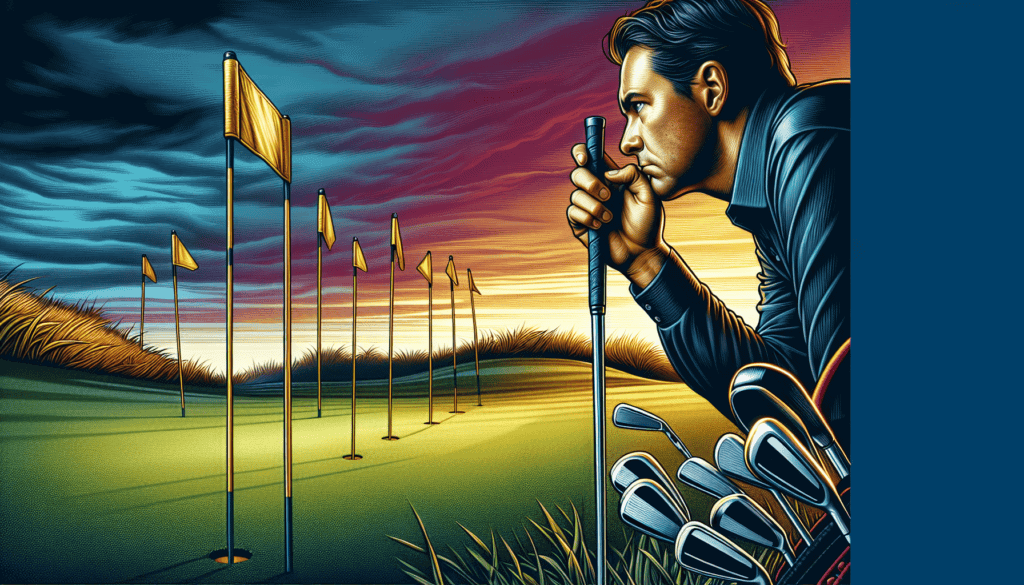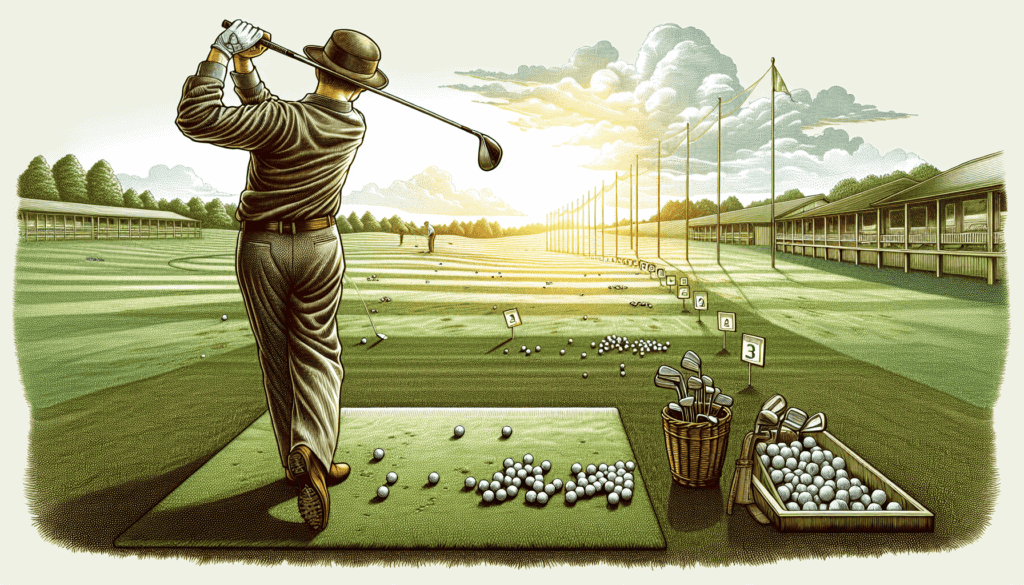Rules of Golf for Beginners: Common Questions Answered
By: Scott Brera | Last Updated: May 4, 2024
Golf can be a confusing sport with many dos and don’ts. This guide strips down the rules of golf for beginners to the basics, equipping you with the knowledge to hit the course. Expect to learn how to tee-off, follow play, score, and observe the unwritten courtesies of the course, setting you up for a penalty-free round of golf.
Key Takeaways
- Golfers should tee off within the boundaries of the tee box as indicated by tee markers, and they must play the ball as it lies throughout the game, adapting to various situations.
- On the fairway, players can remove obstructions without penalty, but they must play the ball from its new position if moved by natural forces. Players also get free relief if their ball is embedded in its pitch mark, and there are specific rules on how to tackle immovable obstructions and conditions like water hazards.
- Scoring in golf involves counting every stroke made, understanding the concept of par for each hole and the course, and includes any additional strokes incurred as penalties for rule infractions, all while maintaining etiquette and pace of play.
Teeing Off: Starting Your Golf Journey

Embarking on your golf journey starts with understanding the basics of teeing off. The initial stroke sets the stage for your game, and it all begins on the teeing ground, commonly known as the tee box. This is where every hole on a golf course starts.
Tee markers indicate the boundaries of the tee box, providing proper alignment for your first swing. Remember, golfers must place their ball between the tee markers and up to two club-lengths behind them, but never ahead of these markers. Trying to improve playing conditions by moving the tee markers infringes upon the rules, resulting in a penalty.
Finding Your Tee Box
When you’re on the golf course, the first hole is typically right outside the clubhouse. Tee markers on the tee box serve as a guide to indicate where you should start the hole. These markers come in different colors, corresponding to various levels of difficulty. This system allows players of different skill levels to tee off from the area that best matches their abilities. While colors may vary from course to course, the below is a pretty good generalization:
Red Tees – typically the shortest distance to the hole and played by females, juniors, and beginners.
Yellow Tees – typically the second shortest distance to the hole and played by seniors.
White Tees – these are the tees played by the majority of average and intermediate players.
Blue Tees – these tees are for more advanced players and offer a challenge due to distance.
Black Tees – referred to as the championship tees and typically reserved for highly skilled or professional golfers (and for professional tournaments).
The First Swing
Now that you’ve found the tee box, it’s time to focus on the all-important first swing. As a beginner, it’s important to remember that if a ball is knocked off the tee during a practice swing or while addressing the ball on the tee box, it can be re-teed without penalty (don’t let your playing mates fool you). It’s also crucial to remember the rule ‘play your ball as it lies’. After your shot, you must hit the ball from wherever it ends up. This rule epitomizes the challenge of golf, teaching you to adapt to various situations and enhancing your strategic decision-making skills.
Navigating the Fairways: Keeping It on Course

Navigating the fairways is another essential part of typical golf. Players are generally expected to play the golf ball as it lies on the fairway without repositioning or altering the lie. A player’s ball is only considered ‘in play’ when they make a swing with the intention of striking the ball.
And don’t forget about golf cart traffic! It should be managed carefully to prevent damage to the course, so always adhere to traffic control measures.
Fair Game Play
Understanding the basic rules of fair game play is vital. The basic rule on the fairway is to play the ball as it lies, unless specific exceptions allow for alteration. For instance, if a ball at rest is moved by natural forces such as wind or water, you’re required to play it from the new position without penalty. Additionally, you’re allowed to remove obstructions such as leaves, litter, and rakes from the area around your golf ball without incurring a penalty.
In the case of a lost ball that is embedded in its own pitch mark on the fairway, free relief is provided, allowing you to drop a new ball without any penalty.
Overcoming Obstacles
Now, let’s talk about overcoming obstacles on the course. Golf is a game played in an outdoor environment, and as such, it presents a unique set of challenges. From animal holes and ground under repair to immovable obstructions or temporary water, golfers are generally allowed free relief from abnormal course conditions unless the ball is in a penalty area.
For immovable obstructions like sprinkler heads, drains, and cart paths, relief is allowed if they interfere with your swing or stance. The relief is determined by dropping a ball in a relief area based on the nearest point of complete relief. However, if your stance or swing is only obstructed by choosing an unreasonable club, stance, or swing under the circumstances, no relief is provided.
Approaching the Green: The Putting Rules

Approaching the green and mastering the putting rules is a crucial part of the golf game. When your ball is on the putting green, you have the option to mark its position with a marker and lift the ball to clean it. Once a marked ball is replaced on the putting green, it ‘owns’ its spot. If it moves for reasons such as wind or gravity, it should be replaced without any penalty. And remember, while on the green, you should maintain a low noise level and avoid stepping on the putting lines of others to avoid disrupting play.
Furthermore, while the ball cannot be moved once the ball lands, obstacles in its path can be removed.
Marking Your Ball
When on the putting green, it’s critical to correctly mark the position of your ball before lifting and cleaning it. To do so, follow these steps:
- Place an artificial object such as a coin or a tee directly behind or next to the ball.
- Lift and clean your ball.
- Place your ball back in its original position, aligning it with the artificial object.
- Remove the artificial object.
However, remember that lifting or deliberately touching your ball or causing it to move in other situations incurs a penalty stroke, unless specific exceptions allow for it without penalty.
After you’ve cleaned the ball, it must be replaced on the exact original spot. If that spot is not known, you must estimate and replace the ball as accurately as possible.
Mastering the Putt
Putting is often a neglected part in a lot of golfer’s game, yet it can significantly improve your score with a little practice.
A somewhat recent concept is implementing a two-putter strategy, which includes a specialized putter like the GP Putter for short putts within 20 feet. The design of the GP Putter aids in easier alignment and squaring of the putter face to the target, which is crucial for improving accuracy on short putts.
An alternative technique gaining popularity is face-on putting, where you face the target during the putt. This technique can potentially improve putt alignment, balance, and stroke naturalness. Remember, practicing putting from inside 10 feet can help avoid three-putt scenarios by improving accuracy from that critical distance.
Hazards and Penalty Areas: Avoiding Extra Strokes

Navigating hazards and penalty areas is a significant aspect of golf. These areas on a golf course are designated as either red or yellow, marking them as one of the five areas with specific rules for penalty strokes. In a penalty area, you can:
- Remove loose impediments and movable obstructions without penalty
- Ground your club without penalty
- Take practice swings that touch the ground without penalty
Identifying Penalty Areas
Recognizing penalty areas is critical. They are typically marked by either yellow or red stakes, which help you identify them during play. However, remember that you can’t play a provisional ball if it’s suspected to be lost in a penalty area. Nor can you declare your ball unplayable if it’s within a penalty area.
Based on your judgement of the situation and the rules of golf, you can assess whether to play the ball as it lies in a penalty area or take a penalty stroke for relief.
Strategies for Playing Through Hazards
When dealing with hazards on the golf course, you have several strategies to choose from. You can choose to play the ball where it lies, opt for stroke-and-distance, or lateral relief with varying penalty strokes.
Specifically, in a red penalty area, you may take lateral relief by dropping the ball within two club-lengths of where it last crossed into the penalty area, which involves a penalty stroke. If your ball is still within the penalty area after your stroke, you can choose to continue playing from within the penalty area or take relief options, although taking relief comes with an additional penalty stroke.
Understanding Scoring: Count Every Stroke
Understanding golf scoring is integral to the game. Each swing in golf, whether it makes contact with the ball or not, counts as a stroke. And no, practice swings do not count. You have to have the intention of hitting the ball. The score in golf is determined by summing the total strokes taken to complete the course.
All strokes taken during the entire round are recorded on each hole, totaled as a gross score, and then the handicap is deducted to calculate the net score.
The Role of Par
Understanding the concept of ‘par’ is crucial for evaluating your performance, especially when comparing it to your previous hole. Par is a predetermined number of strokes that represents the expected level of performance for a hole or course by an expert golfer. The par for each hole is established based on the distance from tee to green, with par-3, par-4, and par-5 values assigned; terrain and other factors may also influence these values.
Scores in golf are compared to the par number, with outcomes being classified as over par, under par, or even with par, signifying how your performance measures up against expected standards. Remember, the total par for a typical 18-hole golf course is around 72, comprising a mixture of par-3, par-4, and par-5 holes.
Let’s explain with an example. Let’s say hole #1 is 150 yards tee to green. The par for this hole is 3 (this is determined by the golf course and will be written on the score card and also plaques beside the tee box). If it takes you 5 strokes (hitting the ball 5 times) to get the ball in the hole, then your score would be 5 (which is 2 strokes above 3 – par for the hole). In this case, you would verbalize this score as 2 over par (more commonly referred to as ‘double bogey’).
Dealing with Penalties
Dealing with penalties is part of golf. Penalty shots are extra strokes added to your score due to rule infractions and vary depending on the type and severity of the violation. Common penalties affecting scoring include:
- Out-of-bounds
- Lost balls
- Unplayable lies
- Water hazards
Each one stroke penalty has specific rules for relief and the assessment of penalty strokes.
To accurately include penalty shots in your final score, you must recognize the type of infraction that leads to a penalty shot, apply the correct number of penalty strokes, and proceed in accordance with the rules.
The Etiquette of Golf: Respect the Sport and Players
Golf is a game of etiquette. Here are some key etiquette rules to follow:
- Prioritize safety by waiting for the group ahead to be out of range before hitting.
- Alert individuals with a shout of ‘Fore!’ should there be a risk of hitting someone with the ball.
- Demonstrate respect and sportsmanship by remaining quiet and still when others are taking their shots.
- Ensure your golf bag is not placed on the green and does not interfere with others’ shots
- Provide encouragement and support throughout the game.
To maintain a good pace on the course, groups playing faster should be allowed to pass slower groups.
Pace of Play and Group Dynamics
Maintaining an efficient pace of play is central to golf etiquette. This includes being ready to take your turn, limiting practice swings, and promoting brisk walking between shots. Aim to prepare for your shot quickly, ideally taking around 40 seconds, and not exceeding more than a minute to avoid slow play.
By following pace of play guidelines, you contribute to a positive flow and interaction with your playing partners on the course, preventing delays for groups playing behind you.
Care for the Course
Caring for the course is an integral part of the game. Players should:
- Repair divots either by replacing the turf or filling them with sand
- Fix any ball marks to help keep the greens in playing condition
- On the putting green, players can repair most forms of damage and are permitted to remove sand and loose soil, except for normal wear for play.
Bunker etiquette requires players to carefully rake sand traps after playing from them to maintain their condition for following players. Don’t forget to follow cart rules, such as ‘cart path only’ or the ‘90-degree rule’, to prevent damage to the fairways and promote the long-term health of the turf.
Building Your Skills: Practice and Equipment

Building your golf skills through regular practice and selecting the right equipment is key to improving your game. Here are some tips to help you:
- Practice regularly, ideally several times a week, to improve your golf game.
- Visit a driving range to work on various types of shots with different clubs.
- Use a putting green to focus on short game skills such as putting and chipping, which are integral to scoring well.
By following these tips, you can enhance your golf skills and see improvement in your game. Creating a repeatable swing through muscle memory is the goal of practicing hour after hour.
Swing analysis tools and video recording can help identify areas for improvement in a golfer’s technique.
Essential Gear for the Game
Choosing the right gear, including clubs, balls, and accessories is essential for the game. Beginner golfers should start with a basic set of 6-8 clubs, featuring a putter, a driver, and a mix of irons, fairway woods, and hybrids. Golf club sets that feature easy-to-launch and forgiving clubs are beneficial for beginners learning to develop a consistent golf swing.
In addition to clubs, golfers should equip their bags with essential accessories such as:
- Golf balls
- Tees
- A divot tool
- Markers
- Additional gear for various course conditions
The choice of a golf bag should consider factors like water resistance, stand bags versus cart bags, and sufficient pockets for storing accessories and personal items.
The Spirit of the Game: Handicaps and Honesty
Finally, let’s quickly touch on the often confusing topic of golf handicaps. A golf handicap is a numerical representation of a golfer’s ability that levels the playing field among players of varying skill levels. The handicap number, ranging from zero to 28 for men and zero to 36 for women, reflects how many strokes over par a player should score on a course of standard difficulty. Handicap calculation includes assessing the course rating, slope rating, and making adjustments for equitable stroke control.
Official handicaps are determined by taking the average of the lowest 10 handicap differentials from the most recent 20 rounds, or the lowest single handicap differential from at least five rounds. In competitive formats like ‘Vs Par’, a player’s handicap adjusts their score relative to par, affecting the outcome of each hole.
Summary
In conclusion, golf is a game of precision, strategy, and etiquette. It’s not just about hitting a ball; it’s about understanding the rules, respecting the course and your fellow players, and continuously striving to improve your skills. Whether you’re a novice golfer or an experienced player brushing up on the essentials, we hope this guide has added value to your golf journey. Now, armed with knowledge and passion, hit the course and enjoy the beautiful game of golf!
Frequently Asked Questions
How do I start a hole in golf?
To start a hole in golf, place your ball between the tee markers at the tee box and up to two club-lengths behind them, but never ahead of these markers. Have fun on the course!
What is a golf handicap?
A golf handicap is a way to level the playing field among players of different skill levels, representing a golfer’s ability with a numerical value.
What are the rules when my ball is on the green?
When your ball is on the green, you can mark, lift, and clean it, and if it moves due to wind or gravity, you should replace it without penalty. Keep in mind that once replaced, the ball ‘owns’ its spot.
Who makes up the rules of golf?
There are two governing bodies worldwide in golf. The USGA (United States Golf Association) and the R&A. The USGA governs the US and Mexico, while the R&A governs the rest of the world.
What are the basic equipment needs for golf?
You’ll need a basic set of 6-8 clubs, golf balls, tees, a divot tool, markers, and extra gear for different course conditions to get started with golf.

Scott Brera is the founder of Brera Golf. When he’s not reviewing or testing golf products, he’s typically out chasing that little white ball.
